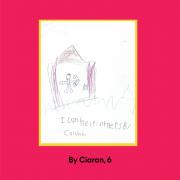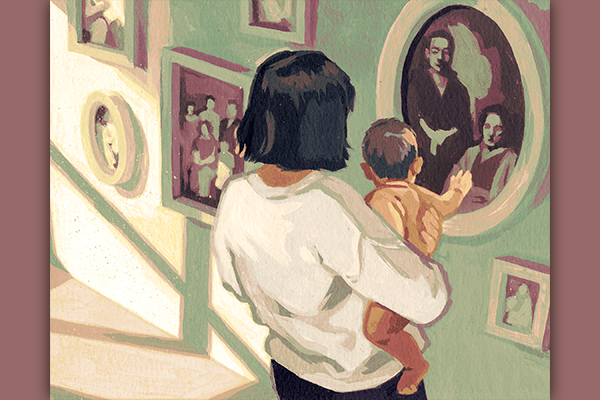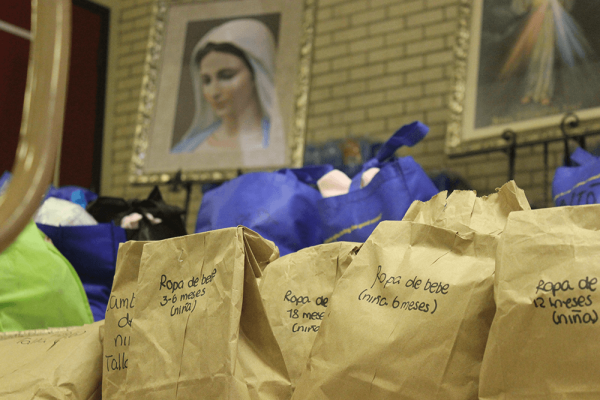As adults are forced into major social and work-related changes, we can quickly lose patience with our children, forget their perspective matters, and resort to “just do it”-type responses. I want to encourage parents to take a deep breath and invite children into a new way of being in the world shaped by COVID-19. Children are morally resilient and creative when we give them the chance. So, how can we talk with our children about this pandemic? Let’s use the love commandment as our guide.
Remember learning about the love commandment? Sunday school may introduce the lesson this way: 1+1=1. (This is maybe not the best approach for parents trying to become homeschool math teachers.) Whether reading from Mark’s or Matthew’s Gospel, Jesus pulls out a few tricks when he gives his answer to the test question: What's the greatest commandment? Jesus could have picked one of the Ten Commandments, but that would have been walking right into a trap. Instead, Jesus refers back to long-held Jewish beliefs and practices.
In Matthew 22:37-39, Jesus says, “‘You shall love the Lord your God with all your heart, and with all your soul, and with all your mind.’ This is the greatest and first commandment. And a second is like it: ‘You shall love your neighbor as yourself.’” The first part is a reminder of the Shema, an ancient Jewish prayer practice his questioners would have said twice a day. The second portion connects love of God to loving our neighbor and ourselves reflecting Jewish practices described in Leviticus 19.
The 1+1=1 nature of this commandment can make it difficult to both understand and follow. I like to think of it as a balancing act. Thankfully, this is easier than juggling. For example, the act of washing hands is an example of doing all three at once. When we wash our hands, we are taking care of our body, honoring God’s creation, and keeping others safe from germs. Asking kids to wash hands is necessary, but connecting it to our faith values and social good gives it meaning. That’s the simple trick of turning something from a chore into moral formation.
How do we invite our children to live the love commandment as we make sense of the COVID-19 pandemic? In practicing love of God, we could use time away from school and friends to build strong faith practices.
- Make time to pray and eat as a family with no extracurriculars to rush to every night.
- Sing a children’s hymn while washing hands. (My favorite is “This Little Light of Mine.”)
- Add a Bible story or scripture passage to the daily homeschool reading assignment.
- Dig into some theological questions about God’s presence in our life.
We can remind ourselves that serving and caring for others is central to being Christian.
- Resist perpetuating discrimination related to COVID-19.
- Pray for those who are sick.
- Write thank-you notes to health care workers at a local hospital.
- Get groceries or make meals for at-risk members of your congregation or neighborhood.
- Reach out to friends and family via phone or video call.
- Talk about Christian commitments to the common good that require us to share our privileges or give something up for the benefit of all, like not having playdates or helping with family chores.
- Discuss Jesus’ teaching in Matthew 25 about helping the sick as hospitality to God in our midst. Staying in and not spreading germs is helping the sick.
- Do a mini-worship service as a family or attend online to share joys and concerns, sing, and pray as a community.
In the face of unexpected changes lived out in close quarters, we will need to be very attentive to love of self.
- Commit to doing our part; even small children can develop positive habits like handwashing, wiping doorknobs, or creating new greetings that don’t require touch.
- Practice the fruits of the Spirit, like patience (Galatians 5:22-23)!
- Use quiet time to disconnect from technology to draw or write about your feelings.
- Talk about your feelings or make emoji faces to share that communicate your current mood. Be open to hearing others’ feelings.
- Move your body to keep it healthy — from walks in wide open spaces, to dance parties in the living room, to jumping jacks on the porch or balcony.
- Give yourself a hug.
The children who shared their thoughts and work for this article, show creativity, understanding, and bravery responding to this sudden shift in how we form community. We can accompany our children in doing the same. We need to recognize they will use different words to describe the situation, complete different chores to contribute to the household, and miss different aspects of social life, but we are all struggling with the same issues. Together, we can reach into our faith tradition to respond with solidarity, hospitality, and love.
Click on the image to start the slideshow of kids' art.
Got something to say about what you're reading? We value your feedback!



















